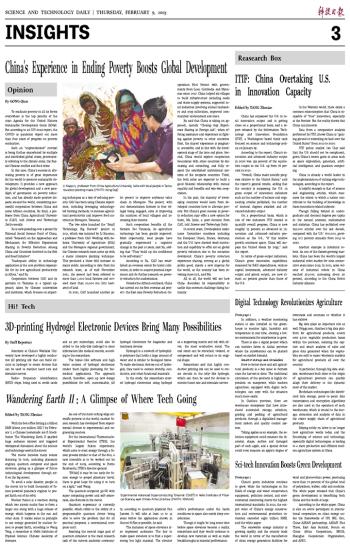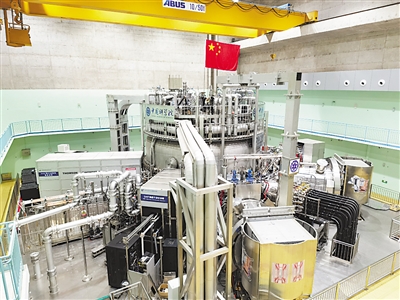
 China's Experience in Ending Poverty Boosts Global Development
China's Experience in Ending Poverty Boosts Global Development ITIF: China Overtaking U.S. in Innovation Capacity
ITIF: China Overtaking U.S. in Innovation Capacity Digital Technology Revolutionizes Agriculture
Digital Technology Revolutionizes Agriculture 3D-printing Hydrogel Electronic Devices Bring Many Possibilities
3D-printing Hydrogel Electronic Devices Bring Many Possibilities Wandering Earth II:A Glimpse of Where Tech Going
Wandering Earth II:A Glimpse of Where Tech Going Sci-tech Innovation Boosts Green Development
Sci-tech Innovation Boosts Green Development
 |
| Experimental Advanced Superconducting Tokamak (EAST) in Hefei Institutes of Physical Science, east China's Anhui province. (PHOTO: XINHUA) |
With the box office hitting 3.4 billion RMB (about 502 million USD ) by February 7, a Chinese homemade sci-fi blockbuster The Wandering Earth II sparked huge audience interest and triggered widespread discussion about the science and technology used in the movie.
The movie includes many scenes featuring hi-tech, including planetary engines, quantum computer and space elevators, giving us a glimpse of future technological development through sci-fi on the big screen.
To avoid a solar disaster, people in the movie try to build thousands of fusion-powered planetary engines to propel Earth out of its orbit.
Nuclear fusion is a reaction during which two atomic nuclei fuse to form a larger one along with a huge release of energy, which happens in the sun and other stars. It makes sense in principle to use energy generated by nuclear fusion to propel Earth, according to Wang Teng, a researcher at Hefei Institutes of Physical Science, Chinese Academy of Sciences.
As one of the most cutting-edge scientific projects in the world, nuclear fusion research has developed from experimental devices to experimental and engineering reactors.
For the International Thermonuclear Experimental Reactor (ITER), the world's largest fusion experiment, which aims to creat energy through a fusion process similar to that of the Sun, a new timetable is to be worked out by the end of 2023, according to Pietro Barabaschi, ITER's director-general.
"[While] it may be too early for fusion energy to propel planetary travel, there is great hope for using it to turn on a light," said Wang.
The quantum computer 550W, with super computing power and self-awareness, also features in the movie.
Quantum supremacy is currently possible, which refers to the ability of a programmable quantum device being able to solve the problem that for all practical purposes, a conventional computer can't.
Reaching the second stage goal of quantum simulator is the main research task of the current academic community, according to quantum physicist Pan Jianwei. It will take at least 10 to 15 years before the application shown in this sci-fi film is possible, he said.
The inclusion of space elevators also impressed audiences. The key to make space elevators is to find a super-strong but light material. The elevator cable's performance under the harsh conditions in space also needs deep consideration.
Though it might be long some time before space elevators become a reality, researchers said they would continue to develop new materials as well as make breakthroughs in material performance.


 Next
Next



